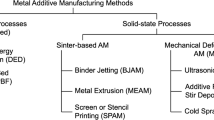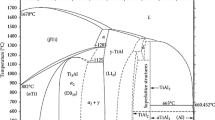Abstract
Quick, low-cost, and high-quality manufacturing is considered a key factor in today’s industry. Therefore, researchers have turned to inventing new methods and technologies for meeting such industrial requirements. Liquid impact forming is one such method which is being increasingly developed in different industries, such as automotive and aerospace. Considered to be a tube hydroforming process, this forming method utilizes liquid pressure to produce the desired shape. In this study, the liquid impact forming process, which was applied to a thin-walled tube made of 6063 aluminum alloy, was experimentally and numerically investigated. In the experimental section, a new die was designed and manufactured for deforming the cross section of the aluminum tube into a hexagonal profile. To investigate the characteristics of the hexagonal profile obtained from the forming process, tensile and three-point bend tests were performed. According to the results obtained from the tensile test, the tensile yield strength in the workpiece increased by 21 MPa due to work hardening. The results obtained from the three-point bend test indicated that the flexural strength of the circular tube was greater than that of the hexagonal profile due to its greater moment of inertia. The numerical results included plastic equivalent strain distribution, variations in the profile thickness, and the force required for the forming process. Upon comparing the workpiece thicknesses obtained from numerical simulation and measurements, a good agreement was observed.
Similar content being viewed by others
References
Zang SH (1999) Developments in hydroforming. J Mater Process Technol 91:236–244
Mohammadi F, Mashadi MM (2009) Determination of the loading path for tube hydroforming process of a copper joint using a fuzzy controller. Int J Adv Manuf Technol 43:1–10
Ahmetoglu M, Altan T (2000) Tube hydroforming: state-of-the-art and future trends. J Mater Process Technol 98:25–33
Koc M (2008) Hydroforming for advanced manufacturing. Woodhead Publishing in Materials, New York
Yang J, Jeon B, Ik Oh S (2001) The tube bending technology of a hydroforming process for an automotive part. J Mater Process Technol 111:171–181
Nikhare C, Weiss M, Hodgson PD (2017) Buckling in low pressure tube hydroforming. J Manuf Process 28:1–10
Stanley P. Ash (1997) Liquid impact tool forming mold. U.S. Patent No. 5630334
Hedrick A (2002) The how, what, and why of liquid impact forming. STAMPING J
Nikhare C, Weiss M, Hodgson PD (2010) Die closing force in low pressure tube hydroforming. J Mater Process Technol 210:2238–2244
Huang CM, Liu JW, Zhong YZ, Wu MJ, Wang KM, Zhou RQ (2014) Exploring liquid impact forming technology of the thin-walled tubes. Appl Mech Mater 633-634:841–844
Hajializadeh F, Mashhadi MM (2015) Investigation and numerical analysis of impulsive hydroforming of aluminum 6061-T6 tube. J Manuf Process 20:257–273
Masoumi E, Ghazanfari A, Hashemi R (2013) Loading path determination for tube hydroforming process of automotive component using APDL. Int J Automot Eng 3:555–563
Hosseinzadeh M, Mostajeran H, Bakhshi-jooybari M, Gorji AH, Nourouzi S, Hosseinipour SJ (2009) Novel combined standard hydromechanical sheet hydroforming process. Proc Inst Mech Eng Part B 224:447–456
Manabe K, Amino M (2002) Effects of process parameters and material properties on deformation process in tube hydroforming. J Mater Process Technol 123:285–291
Koc M, Altan T (2002) Prediction of forming limits and parameters in the tube hydroforming process. Int J Mach Tool Manu 42:123–138
Trana K (2002) Finite element simulation of the tube hydroforming process—bending, preforming and hydroforming. J Mater Process Technol 127:401–408
Shi Y, Jin H, Wu PD, Lloyd DJ (2017) Effects of superimposed hydrostatic pressure on necking and fracture of tube under hydroforming. Int J Solids Struct. In press
Author information
Authors and Affiliations
Corresponding author
Ethics declarations
Conflict of interest
The authors declare that they have no conflict of interest.
Rights and permissions
About this article
Cite this article
Shahbazi Karami, J., Nourbakhsh, S.D. & Tafazzoli Aghvami, K. Experimental and numerical assessment of mechanical properties of thin-walled aluminum parts produced by liquid impact forming. Int J Adv Manuf Technol 96, 4085–4094 (2018). https://doi.org/10.1007/s00170-018-1828-x
Received:
Accepted:
Published:
Issue Date:
DOI: https://doi.org/10.1007/s00170-018-1828-x




